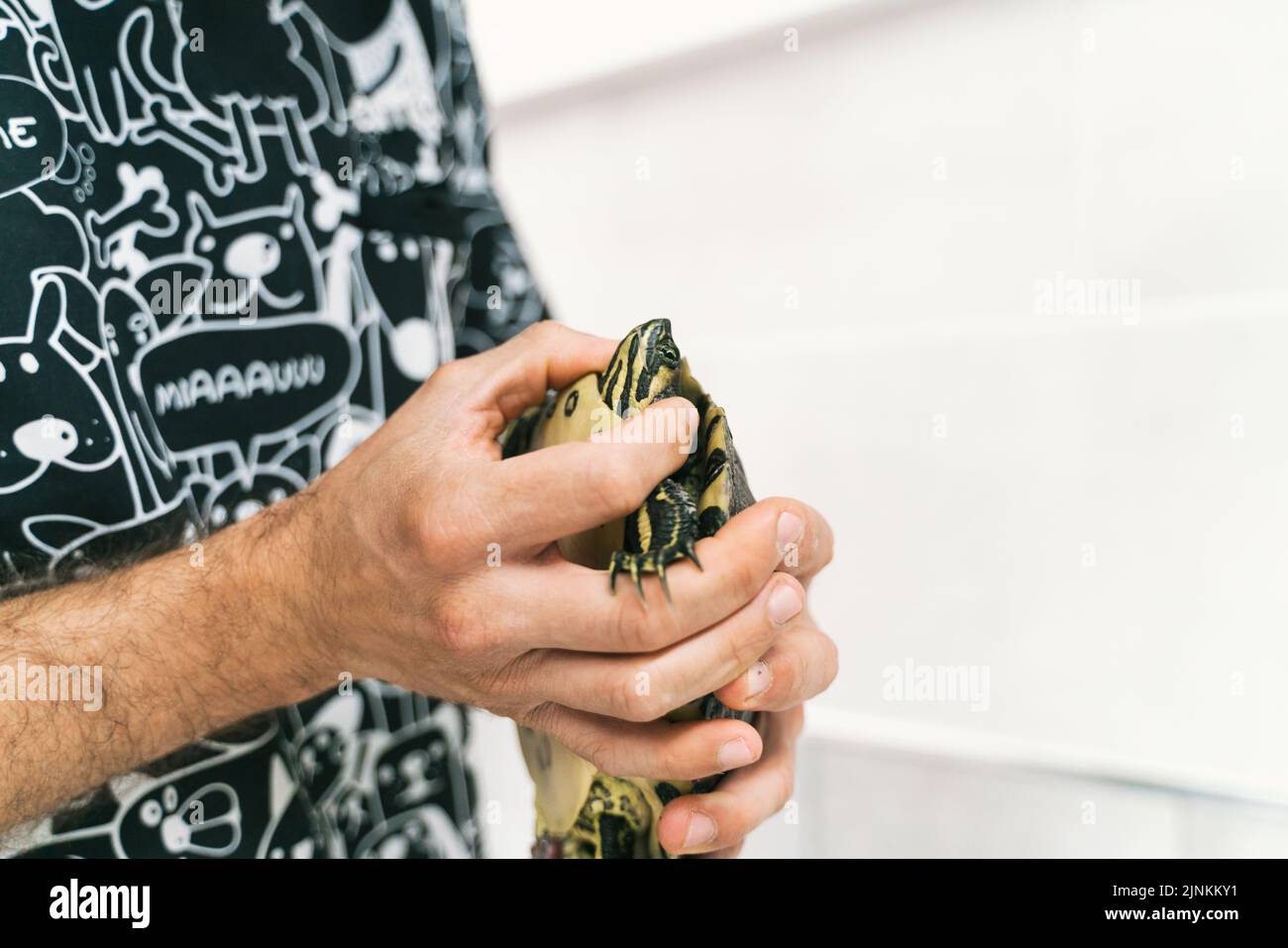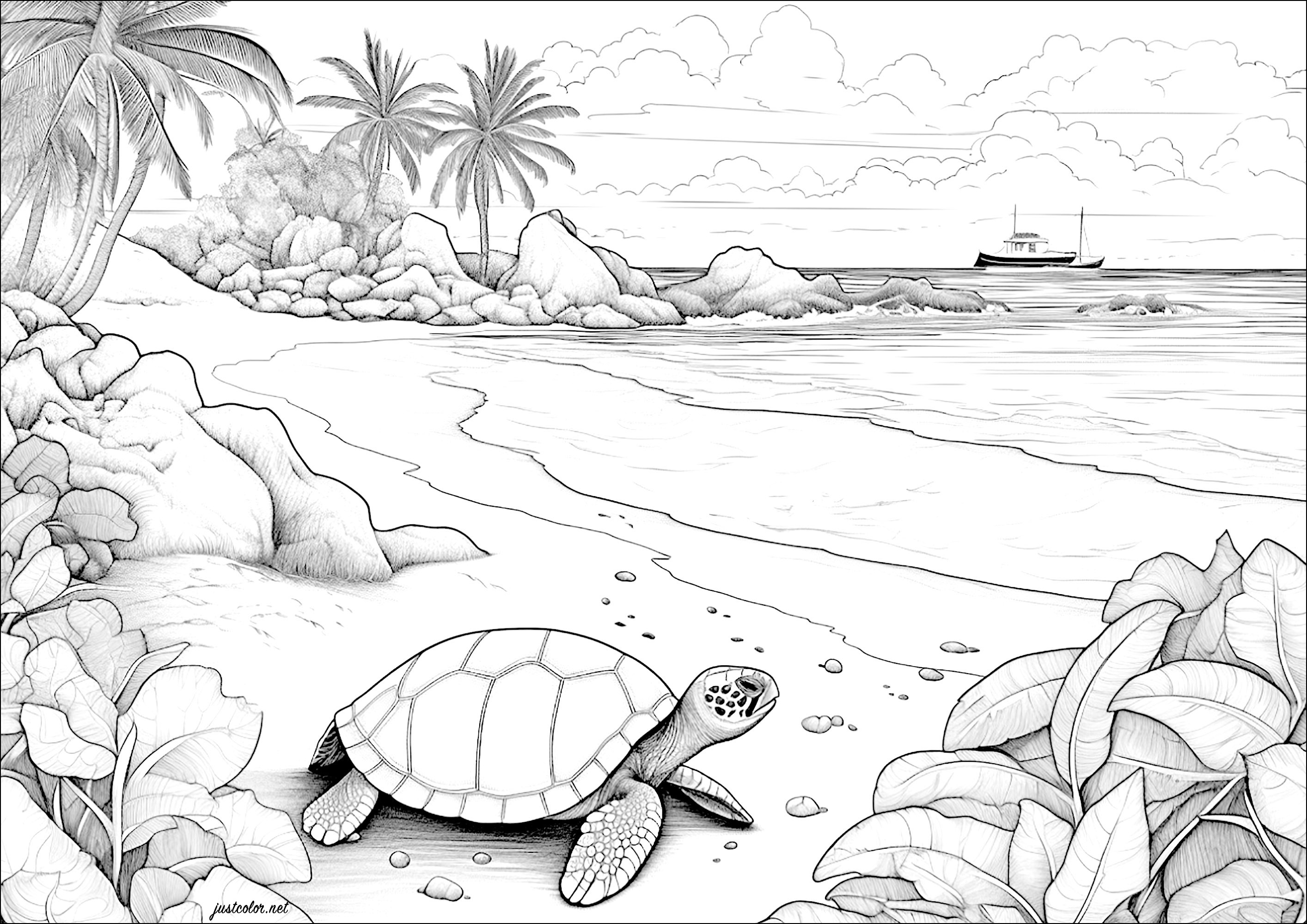
Lifeline on the Waves: The Critical Veterinary Care for Wild Turtles of Turtle Island
Beneath the cerulean expanse of the ocean surrounding Turtle Island, a silent crisis unfolds daily for its ancient inhabitants. From the majestic loggerheads navigating migratory routes to the delicate diamondback terrapins foraging in brackish estuaries, wild turtles face a gauntlet of threats in an increasingly human-dominated world. On this dedicated speck of land, however, a beacon of hope shines: the Turtle Island Wildlife Hospital, a pioneering facility where cutting-edge veterinary medicine meets unwavering conservation commitment, offering a vital lifeline to these imperiled reptiles.
The hospital isn’t just a clinic; it’s a sanctuary, a research hub, and often, the last chance for turtles battered by the modern age. "Our patients arrive with stories etched onto their shells," explains Dr. Anya Sharma, Head Veterinarian at the Turtle Island Wildlife Hospital, her voice a blend of scientific precision and profound empathy. "Boat strikes leave devastating carapace fractures, discarded fishing gear causes deep constricting wounds, and plastic ingestion leads to slow, agonizing deaths. Then there are the emerging diseases, often exacerbated by environmental stressors. Every turtle represents a microcosm of the larger ecological struggle."
Upon arrival, a turtle’s journey to recovery begins with immediate triage. A sophisticated intake process records everything from species identification and estimated age to GPS coordinates of rescue and initial physiological assessments. Severely injured animals are rushed to the hospital’s state-of-the-art diagnostic suite, equipped with digital radiography, ultrasound, and even endoscopic capabilities. "Accurate diagnostics are paramount," states Dr. Sharma, gesturing towards a large loggerhead slowly recovering from a propeller injury in a specialized rehabilitation tank. "We need to understand the full extent of the damage before we can formulate an effective treatment plan."
Surgical interventions are common, often intricate and lengthy. Fractured carapaces, for instance, require meticulous cleaning, debridement, and stabilization using techniques adapted from human orthopedics. Titanium plates, surgical wire, and even dental acrylic are employed to piece together shattered shells, a process that can take hours. "Imagine repairing a living, breathing bone structure that also serves as its protective armor," says Ben Carter, the hospital’s lead veterinary technician, whose hands bear the scars of countless delicate procedures. "It’s not just about fixing the shell; it’s about preserving organ function underneath and ensuring future mobility and defense."
Beyond trauma, the team tackles a myriad of internal ailments. Parasitic infections, often exacerbated by compromised immune systems, are treated with targeted antiparasitics. Respiratory infections, sometimes linked to oil spills or environmental toxins, require nebulization and broad-spectrum antibiotics. A particularly challenging affliction is fibropapillomatosis (FP), a debilitating tumor-forming disease primarily affecting green sea turtles. While the exact cause is still under investigation, it’s believed to be linked to a herpesvirus activated by environmental contaminants. Turtles afflicted with FP undergo surgical removal of these tumors, a process that can be repeated if they recur. "FP is a heartbreaking condition," Dr. Sharma admits. "We can remove the visible tumors, but the underlying systemic issue remains. Our hope is that a clean, nutritious environment post-surgery gives them the best chance at a tumor-free life."

Nutrition plays a crucial role in rehabilitation. Severely debilitated turtles often refuse food or are too weak to hunt. The hospital maintains a specialized ‘turtle kitchen,’ preparing a balanced diet of fresh fish, squid, and nutrient-rich greens, supplemented with vitamins and minerals. For those unable to eat voluntarily, tube feeding is administered, slowly building their strength until they can forage independently. Water quality in the rehabilitation tanks is meticulously monitored, mimicking natural conditions as closely as possible, crucial for preventing secondary infections and promoting healing.
The rehabilitation process is a marathon, not a sprint. A loggerhead with a severe boat strike might spend months, even over a year, at the facility. Daily wound care, physical therapy (often involving swimming exercises in controlled environments), and continuous health assessments are standard. The goal isn’t just survival, but full recovery to a state where they can thrive in the wild. "Releasing a fully recovered turtle is the most rewarding part of the job," says Carter, recalling a recent release of a rehabilitated hawksbill. "Watching them swim away, strong and free, reminds you why every late night and every difficult surgery is worth it."
However, the veterinary care provided at Turtle Island extends beyond individual treatment. The hospital operates as a critical hub for scientific research, with every case contributing valuable data to the broader understanding of turtle health, disease ecology, and the impacts of anthropogenic threats. Necropsies on deceased turtles provide crucial insights into causes of mortality, often revealing systemic issues or emerging pathogens. Tissue samples are collected for genetic analysis, toxicology screenings, and disease surveillance, contributing to a global database that informs conservation strategies. "Our clinical work directly informs our conservation efforts," Dr. Sharma emphasizes. "By understanding why turtles are getting sick or injured, we can advocate for policy changes, habitat protection, and public awareness campaigns that address the root causes."
The financial and logistical challenges are immense. Operating a 24/7 facility dedicated to wild marine and freshwater reptiles requires substantial resources, from specialized medical equipment to a highly trained staff. Funding primarily comes from grants, donations, and volunteer efforts. Public engagement is therefore critical, not just for financial support but for fostering a sense of shared responsibility. Educational programs at the hospital raise awareness about turtle conservation, teaching visitors about responsible boating practices, the dangers of marine debris, and the importance of reporting injured turtles. "Every person who leaves here understanding the plight of these animals becomes an ambassador for their survival," Carter notes.
Looking ahead, the Turtle Island Wildlife Hospital plans to expand its research into climate change impacts on turtle health, particularly focusing on how rising sea temperatures affect nesting success and hatchling sex ratios. They also aim to develop more advanced techniques for early disease detection in wild populations. "The challenges are growing, but so is our capacity to respond," Dr. Sharma concludes, her gaze sweeping across the bustling facility. "Turtle Island isn’t just a place where injured turtles come to heal; it’s a testament to humanity’s commitment to preserving these ancient mariners, ensuring their continued presence in our oceans for generations to come. Their survival is inextricably linked to our own."
The work on Turtle Island is a relentless, often heartbreaking, but ultimately hopeful endeavor. It is a daily battle fought with scalpels and sutures, compassion and scientific rigor, all in service of creatures who have navigated Earth’s waters for over 100 million years, now relying on human hands to mend the wounds inflicted by human progress.



